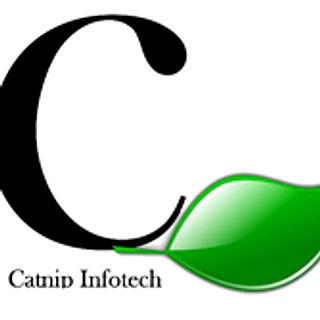Unveiling Business Efficiency with Process Mining
- Gayathri V
- Jul 14, 2024
- 4 min read
Understanding the Fundamentals of Process Mining
Defining Process Mining
Process mining is a technique used to analyze and improve business processes by extracting knowledge from event logs. It helps us understand how processes are actually performed and identify areas for improvement. By examining the data, we can see the real flow of activities and spot any deviations from the intended process.
Historical Evolution of Process Mining
The concept of process mining has evolved over the years. Initially, it was a part of workflow management. However, with advancements in technology, it has grown into a distinct field. Today, process mining combines data science and business process management to provide valuable insights.
Key Components of Process Mining
There are several key components in process mining:
Event Logs: These are records of activities within a process.
Process Models: These are visual representations of the process flow.
Analysis Techniques: These include various methods to analyze and interpret the data.
The Role of Process Mining in Modern Business
Enhancing Operational Efficiency
Process mining helps us streamline our operations by providing a clear view of our workflows. By analyzing data from various sources, we can identify areas where we can cut down on time and resources. This leads to a more efficient and productive business environment.
Identifying Bottlenecks and Inefficiencies
One of the key benefits of process mining is its ability to pinpoint bottlenecks and inefficiencies in our processes. By understanding where these issues occur, we can take targeted actions to resolve them. This not only improves our overall efficiency but also enhances customer satisfaction.
Improving Decision-Making Processes
With process mining, we gain valuable insights that inform our decision-making processes. The data-driven approach allows us to make more informed choices, reducing the risk of errors and improving outcomes. Better decisions lead to a more successful and competitive business.
Implementing Process Mining in Your Organization
Steps to Successful Implementation
To successfully implement process mining in your organization, follow these steps:
Identify the processes you want to analyze.
Gather the necessary data from your existing systems.
Choose the right process mining tool that fits your needs.
Analyze the data to uncover insights and patterns.
Implement changes based on the findings.
Monitor the results and make adjustments as needed.
Tools and Technologies for Process Mining
There are various tools and technologies available for process mining. Some popular options include:
Celonis
Disco
ProM
Minit
Each tool has its own strengths and weaknesses, so it's important to choose one that aligns with your organization's goals and requirements.
Overcoming Common Challenges
Implementing process mining can come with its own set of challenges. Some common issues include:
Data quality and availability
Resistance to change from employees
Integration with existing systems
To overcome these challenges, ensure you have a clear plan, communicate the benefits to your team, and provide adequate training and support.
Case Studies: Success Stories of Process Mining
Manufacturing Industry
In the manufacturing industry, process mining has revolutionized production lines. By analyzing workflows, companies have been able to reduce production time and cut costs. For instance, a major car manufacturer used process mining to identify delays in their assembly line, leading to a 15% increase in efficiency.
Healthcare Sector
Process mining has also made a significant impact in healthcare. Hospitals have used it to streamline patient care processes, resulting in shorter wait times and improved patient outcomes. One hospital reported a 20% reduction in patient wait times after implementing process mining techniques.
Financial Services
In the financial sector, process mining has helped banks and financial institutions enhance their services. By examining transaction processes, banks have been able to detect and eliminate bottlenecks, leading to faster transaction times and better customer satisfaction. A leading bank saw a 25% improvement in loan processing times after adopting process mining.
Future Trends in Process Mining
Integration with Artificial Intelligence
The integration of Artificial Intelligence (AI) with process mining is transforming how businesses operate. AI algorithms can analyze vast amounts of data quickly, providing insights that were previously impossible to obtain. This combination allows for more accurate predictions and smarter decision-making.
Advancements in Data Analytics
Data analytics is evolving rapidly, and process mining is benefiting from these advancements. Enhanced data processing techniques enable us to handle larger datasets with greater precision. This improvement leads to more detailed and actionable insights, helping businesses optimize their processes more effectively.
The Growing Importance of Real-Time Monitoring
Real-time monitoring is becoming increasingly important in process mining. By continuously tracking processes, organizations can identify and address issues as they arise, rather than after the fact. This proactive approach helps in maintaining efficiency and reducing downtime.
Measuring the Impact of Process Mining
Key Performance Indicators
To gauge the success of process mining, we need to focus on Key Performance Indicators (KPIs). These metrics help us understand how well our processes are performing. KPIs provide a clear picture of efficiency and effectiveness. Common KPIs include cycle time, cost savings, and error rates. By tracking these, we can see where improvements are needed and where we are excelling.
Return on Investment
Return on Investment (ROI) is crucial for any business initiative. For process mining, ROI can be measured by comparing the costs of implementation with the benefits gained. This includes both direct savings and indirect benefits like improved customer satisfaction. A positive ROI indicates that the investment in process mining is paying off.
Long-Term Benefits
The long-term benefits of process mining go beyond immediate gains. Over time, we can expect continuous improvement in our processes, leading to sustained efficiency and cost savings. Additionally, process mining helps in building a culture of data-driven decision-making, which is invaluable for future growth.
Understanding how process mining impacts your business can be a game-changer. It helps you see where you can improve and save time. Want to learn more? Visit our website today and discover how we can help you optimize your processes.






Comments